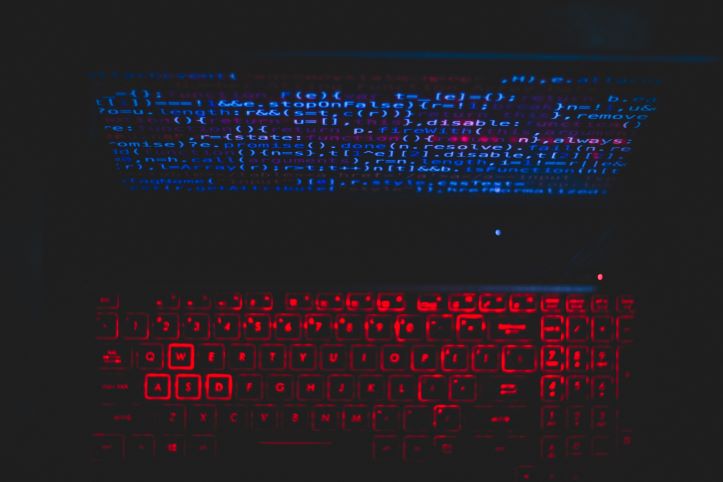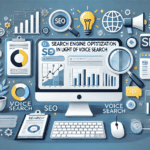An AI engineer must know How to handle bias in AI systems. In today’s rapidly advancing technological landscape, the emergence of artificial intelligence (AI) has undeniably reshaped how we interact with and rely on technology. As AI systems become integral to our decision-making processes, the ramifications of biased algorithms have grown more pronounced.
The influence of biased AI on decision-making cannot be understated. Imagine a scenario where AI-driven loan approval systems inadvertently favor certain demographics, perpetuating inequalities. Such instances expose the critical need to address bias in AI systems. The repercussions extend beyond mere inconvenience; they encompass deep-seated issues of equity and fairness.
Our overarching goal is clear: to establish a landscape where AI operates with fairness and equity at its core. This requires a concerted effort to not only recognize and rectify existing biases but also to prevent future biases from taking root. As we delve into the depths of handling bias in AI systems, let’s explore the multifaceted strategies that can steer us toward a future where technology empowers all, uninhibited by prejudice.
Know What is Bias in AI Before Learning How to Handle Bias in AI Systems
In the realm of artificial intelligence, bias refers to the systematic and unfair favoring or discrimination shown by AI algorithms towards certain groups or characteristics. This bias can lead to skewed outcomes that perpetuate inequalities rather than providing fair and impartial decisions.
Bias often creeps into AI algorithms inadvertently. This happens when algorithms learn from historical data that reflects societal biases, which then influences their decision-making process. Even with the best intentions from developers, these algorithms can perpetuate biased patterns if not carefully designed and monitored.
Examples of Real-World Bias Incidents in AI Systems
Criminal Sentencing Algorithms: Certain AI systems used in criminal justice have shown bias against minority communities. They predict a higher likelihood of recidivism for individuals from these communities, leading to longer sentences and unjust outcomes.
Gender Bias in Language Processing: Language models have demonstrated gender bias by associating certain professions or activities more strongly with one gender over another. This can reinforce stereotypes and limit opportunities.
Loan Approval Discrimination: AI-powered loan approval systems have been found to favor certain demographics while discriminating against others. This can perpetuate financial disparities and hinder socio-economic progress.
Racial Bias in Facial Recognition: Facial recognition technology has struggled with accurately identifying individuals with darker skin tones, resulting in misidentifications and potential infringements on privacy and security.
Online Ad Targeting: AI-driven online ad targeting systems have been known to show ads for high-paying jobs more frequently to men than women, reflecting and potentially exacerbating existing gender pay gaps.
6 Ways to Prevent AI Bias
# Diverse Data Collection
Collect from a Wide Range of Sources
To cultivate unbiased AI systems, the journey starts with the data we feed them. Casting a wide net during data collection is key. Drawing information from varied sources helps prevent a skewed representation of reality. Incorporating data from different industries, regions, and contexts enriches the dataset, leading to more accurate and inclusive AI models.
A critical aspect of data collection is ensuring that various demographics are well-represented. Diversity matters – it reflects the complexity of human experiences. By including data from different age groups, genders, ethnicities, and socio-economic backgrounds, we foster AI systems that account for the myriad ways people interact with technology.
Avoid Over-representing Dominant Groups
One pitfall to sidestep is over-representation of dominant groups in the data. Such skewness can lead to models that don’t grasp the full range of human diversity. By consciously avoiding this bias, we dismantle the potential for reinforcing existing inequalities and ensure our AI learns from a balanced perspective.

# Data Preprocessing
Identify and Address Skewed Data Distributions
Before feeding data into AI models, it’s vital to scrutinize the distribution of the data. Skewed distributions can lead to biased outcomes. By recognizing these imbalances, we can apply techniques such as re-sampling or re-weighting to rectify the skewed representation, allowing the AI to learn from a more accurate portrayal of reality.
Real-world data is seldom perfect; missing values and outliers are common. Dealing with them requires finesse. Imputing missing data thoughtfully and treating outliers judiciously helps maintain the integrity of the dataset. Ignoring or mismanaging these aspects can misguide AI algorithms and produce inaccurate results.
Apply Techniques Like Data Augmentation for Balance
Data augmentation introduces variety into the dataset by creating new instances through transformations. It’s especially useful when working with limited data or imbalanced classes. By synthetically expanding the dataset, we enhance the AI model’s ability to recognize patterns across diverse scenarios, reducing the risk of biased decision-making.
# Bias-Aware Algorithms
Choose Algorithms that Prioritize Fairness
Selecting the right algorithm is pivotal in crafting unbiased AI systems. Bias-aware algorithms are designed to prioritize fairness, ensuring that decisions aren’t influenced by inherent biases present in the data. By opting for these algorithms, we lay a strong foundation for mitigating bias in AI outcomes.
Implement Reweighing and Re-sampling Methods
Reweighing: This method involves assigning different weights to different data points based on their demographic attributes. By giving more weight to underrepresented groups, we correct imbalances in the training data, leading to a more equitable learning process.
Re-sampling: Re-sampling techniques like oversampling and undersampling address class imbalances by either duplicating instances from minority classes or reducing instances from majority classes. This levels the playing field for AI algorithms and helps them learn without overemphasizing dominant groups.
Customize Loss Functions to Minimize Specific Biases
Loss functions guide how AI models learn from data. By customizing these functions, we can explicitly target and minimize specific biases. This involves adding penalties for biased predictions, nudging the AI to prioritize fairness in its decision-making process.
# Regular Auditing
Just like any well-maintained system, AI models need routine check-ups. Regularly assessing their performance is crucial to ensure they’re delivering accurate and unbiased outcomes. This involves monitoring how well they’re aligning with desired goals and identifying any signs of bias that may have crept in.
Conduct Bias Audits Using Benchmark Datasets
Benchmark datasets act as a measuring stick for AI performance. Conducting bias audits using these datasets helps us quantitatively evaluate the presence of biases. By comparing AI predictions with ground truth data, we can uncover any disparities that might have arisen, enabling us to take corrective action.
Iteratively Refine Models to Reduce Bias Over Time
Bias reduction isn’t a one-time fix; it’s an ongoing process. After conducting audits and identifying biases, the next step is to refine the models iteratively. This involves adjusting algorithms, retraining on updated data, and modifying features to progressively reduce biases and enhance the AI’s fairness.
# Human Oversight
To infuse AI systems with fairness, diversity in development teams is crucial. Different perspectives bring nuanced insights, helping identify potential biases and blind spots early on. Diverse teams can collectively navigate the complexities of bias and contribute to more well-rounded and equitable AI solutions.
Ethics should be at the forefront of AI development. Encouraging open discussions about the potential ethical implications of AI algorithms helps raise awareness among team members. These conversations lead to informed decisions that prioritize fairness and guard against unintentional bias.
AI systems excel in processing data, but some decisions require a human touch. Complex cases where biases may be subtle or context-dependent benefit from human intervention. Allowing humans to review and override AI decisions in such scenarios ensures that final outcomes are both accurate and just.
# Transparency and Explanation
Transparency is a cornerstone of responsible AI deployment. It’s vital that the decision-making process of AI algorithms is understandable and traceable. This involves shedding light on how the algorithms arrive at their conclusions, making the technology more accountable and less susceptible to hidden biases.
AI’s inner workings can sometimes appear opaque to users. Clear explanations for model outputs bridge this gap. When users comprehend how AI arrives at a decision, they can assess its credibility and identify any potential biases. Transparent explanations foster trust and empower users to make informed judgments.
Enhance User Understanding and Trust in AI Systems
Trust in AI hinges on understanding. By demystifying complex technical jargon and presenting AI outcomes in comprehensible terms, we nurture user trust. When users feel confident in the AI’s fairness and reliability, they’re more likely to engage with and benefit from AI-driven solutions.
Ethical Considerations
Ethics isn’t a one-time checkbox; it’s an ongoing dialogue. Learning how to develop ethical Artificial General Intelligence is very important. Continual ethical discussions are essential to navigate the ever-evolving landscape of AI. By addressing emerging challenges, we stay attuned to potential biases and ethical concerns, ensuring AI systems remain aligned with societal values. Here are some important considerations:
- Bias Detection and Mitigation: Regularly assessing and addressing biases that arise in AI systems to prevent discriminatory outcomes.
- Data Privacy: Safeguarding user data and ensuring AI processes respect privacy norms and regulations.
- Equity and Fairness: Ensuring AI systems are designed to provide fair outcomes for all user groups, regardless of demographic factors.
- Accountability: Assigning responsibility for AI decisions, clarifying who is accountable for any biases that may occur.
- Unintended Consequences: Anticipating and managing unforeseen impacts of AI on society, economy, and employment.
- Transparency and Explainability: Making AI systems understandable and interpretable to avoid a “black box” scenario.
- User Consent: Ensuring users are informed and consent to AI-driven processes that affect them.

What Professionals Say About Bias in AI Systems
- “Bias in AI systems is a reflection of the biases present in our society. As developers, it’s our responsibility to ensure that our algorithms don’t perpetuate or amplify these biases.” – Dr. Lisa Martinez, AI Researcher
- “AI bias is a stark reminder that technology isn’t immune to human flaws. We must actively work to identify and eliminate bias to create AI that is fair and just.” – Michael Johnson, AI Developer
- “The potential consequences of biased AI are far-reaching, from perpetuating discrimination to compromising decision-making. It’s imperative that we address bias to build trustworthy AI.” – Emily Davis, Data Scientist
- “Bias in AI undermines the very purpose of using technology to make objective decisions. It’s a call to action for all of us in the field to create systems that are unbiased and equitable.” – Professor David Lee, AI Ethics Expert
- “Building unbiased AI requires a multi-pronged approach: diverse teams, transparent algorithms, and ongoing audits. It’s a journey that requires continuous effort and vigilance.” – Dr. Sarah Adams, AI Ethicist
- “AI should be a tool for societal progress, not a mirror of our biases. We need to challenge the status quo, question our algorithms, and ensure our technology serves everyone fairly.” – Alex Turner, Tech Analyst
- “Ethics and technology are inseparable in the era of AI. We need to consider not just what AI can do, but what it should do, and that includes eliminating bias.” – Rachel Miller, AI Researcher
- “Bias in AI isn’t a flaw of the technology itself, but a symptom of the biases ingrained in our data and societal structures. We must actively work to identify and rectify these biases to ensure AI benefits all.” – Dr. Amanda Carter, AI Researcher
- “AI has incredible potential to drive positive change, but it also has the power to perpetuate inequalities. Addressing bias requires a comprehensive approach that combines technical expertise and ethical considerations.” – Lisa Johnson, AI Developer
- “AI bias is a complex challenge that demands ongoing commitment. It’s not about achieving perfection but about continuous improvement to ensure that our AI systems contribute to a more equitable future.” – Professor Mark Anderson, AI Ethics Expert
Conclusion
In the quest to address bias in AI systems, it’s evident that a unified, cross-disciplinary effort is essential. The collaboration of technology, ethics, and various fields ensures a well-rounded approach to combating bias and achieving equitable outcomes. However, this journey doesn’t conclude here. Continued research and development remain imperative. As AI technology advances, new challenges arise, demanding innovative solutions to evolving biases. Our commitment to ongoing exploration and improvement will lead to the realization of unbiased AI systems that serve all individuals fairly. By working together and maintaining a steadfast dedication to progress, we lay the groundwork for a future where technology respects and reflects the diverse tapestry of humanity.








